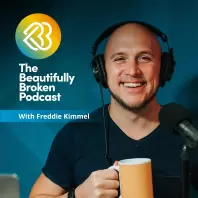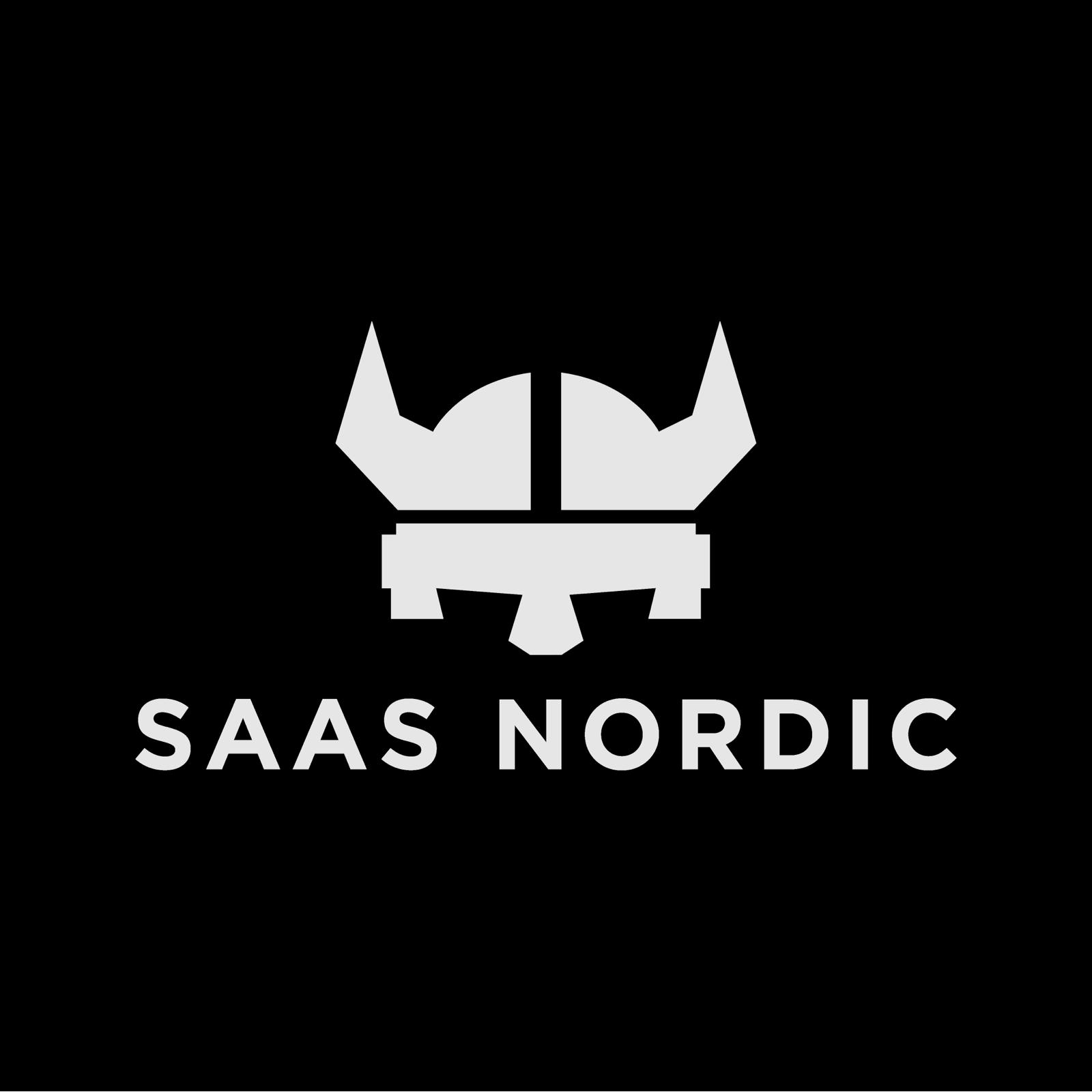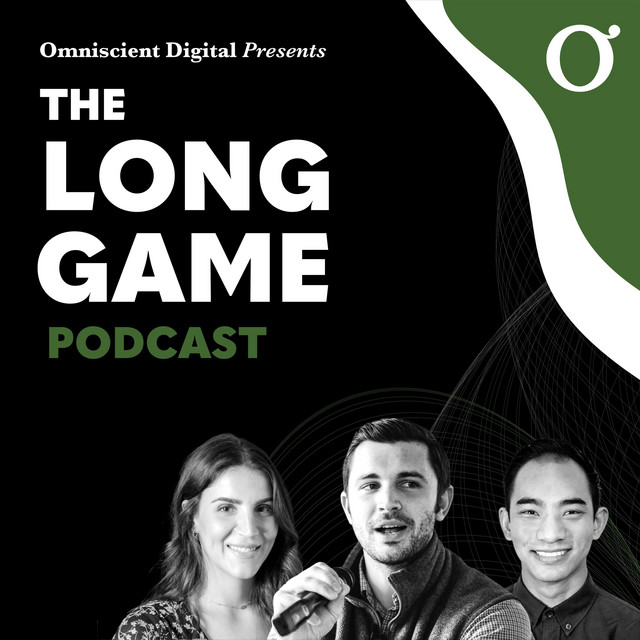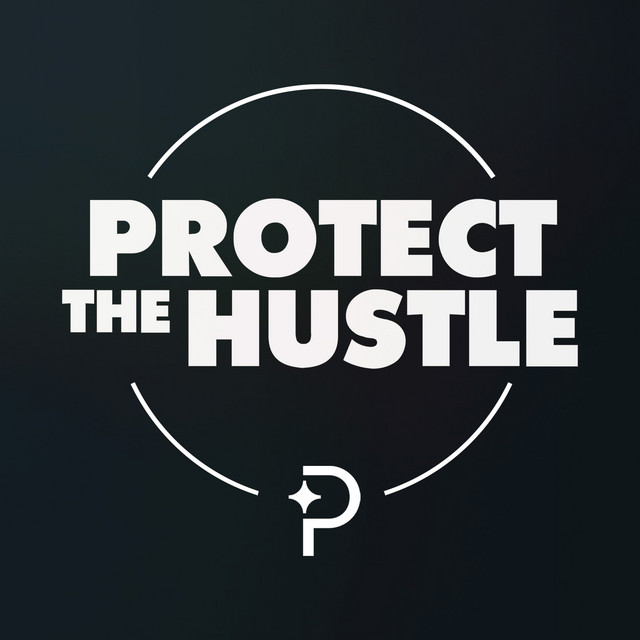
Protect the Hustle | A SaaS Podcast

Basic Member
Ownership Verification Center
And, schedule a video verification call with us. Don't worry it takes a few minutes only :)
Latest Episodes
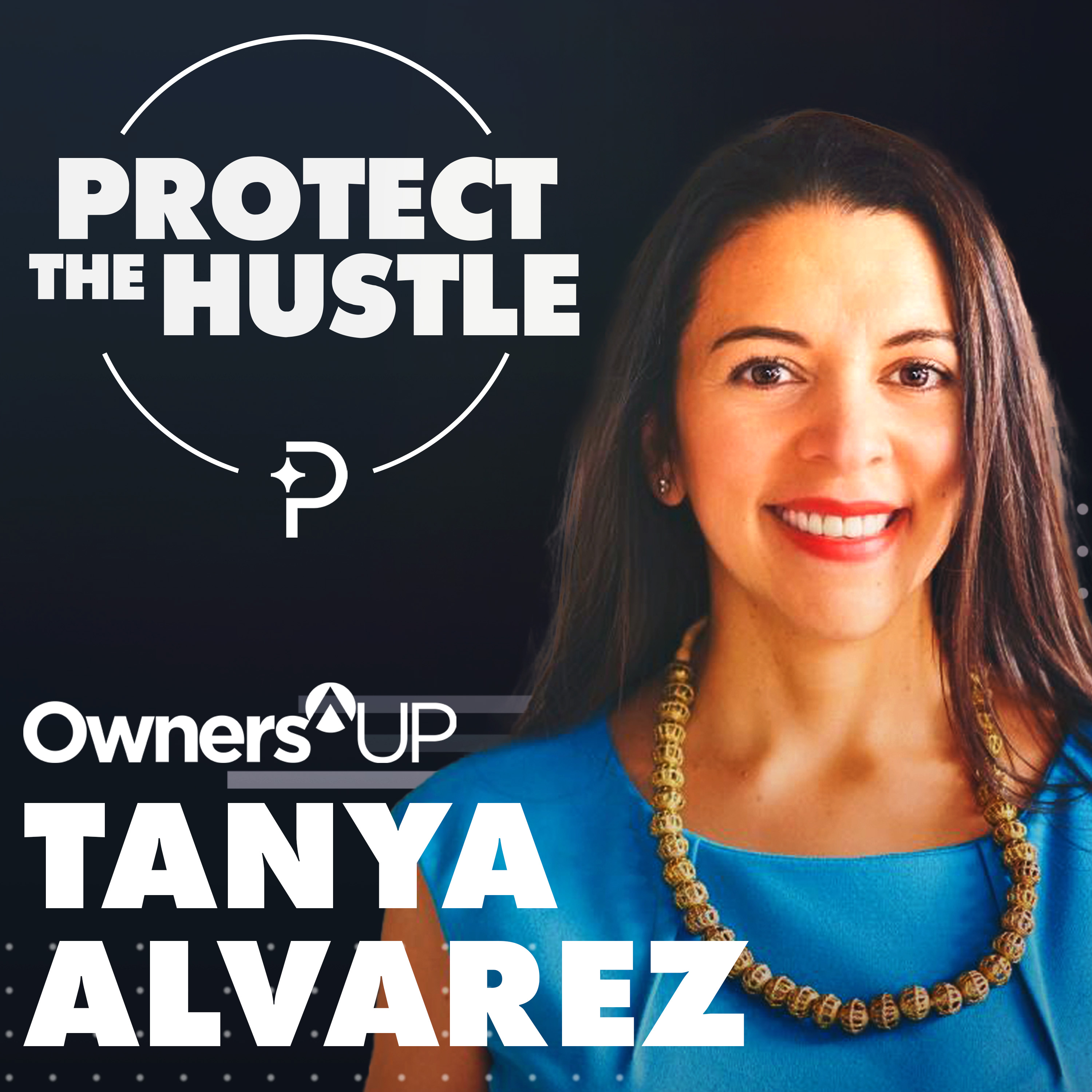
The R.A.P. Method: Tanya Alvarez's Recipe to Mastering Productivity
In the stillness of dawn, a lone runner paces the streets, their commitment to the run a silent battle against the comfort of rest. This is the power of accountability: when another joins the run, the journey changes—each stride is shared, and the motivation multiplies. What was once a struggle becomes a pact, as they urge each other forward, embodying the resilience and shared dedication that turn individual effort into collective endurance.
Today, we dive into the parallels between this partnership and the world of B2B SaaS with Tanya Alvarez, Founder of OwnersUP. Tanya stands as the quintessential accountability partner for SaaS leaders, teaching them to channel the spirit of a marathoner to achieve long-term success. We'll uncover how the principles of accountability can catalyze growth, foster relentless pursuit of goals, and transform the solitary sprint of business into a synchronized stride towards triumph. Join us as we explore the synergy of teamwork and accountability with Tanya, and learn how to make your business run a race where every step counts.
High-Level Overview
- Goal Prioritization: Strategies for entrepreneurs to prioritize tasks effectively to ensure progress towards their most important objectives.
- Accountability Groups: The role and importance of accountability groups for entrepreneurs to stay focused and motivated, sharing the concept of Owners Up as a platform that facilitates such groups.
- Balancing Work and Personal Life: Tanya's personal journey from being a workaholic to achieving a healthier work-life balance, particularly after becoming a parent.
- The R.A.P. Method: Tanya introduces the Review, Assess, and Prioritize method as a daily productivity tool for entrepreneurs to wrap up their day and plan for the next.
- Building Supportive Communities: The significance of creating a supportive network or "village" for entrepreneurial success and parenting, emphasizing the importance of community in personal and business growth.
The R.A.P. Method
The R.A.P. method, developed by Tanya Alvarez, is a systematic approach designed for entrepreneurs to enhance their daily productivity and maintain focus on their most impactful tasks. It’s a reflective process that encourages regular review and assessment, allowing for the prioritization of actions that drive the most value for their businesses.
- Review (R): Reflect on the day’s activities, noting accomplishments and areas of improvement. This is a time for celebration of what was achieved and understanding what could be done better.
- Assess (A): Evaluate the day on a scale of one to five to determine what made it a five and what didn’t. This helps in identifying what tasks or actions contribute to the most productive days.
- Prioritize (P): Decide on the top three tasks that, if completed, would make the next day successful. These should be tasks that align with the overall business objectives and personal goals.
This method goes beyond simple task management; it's a strategic approach for entrepreneurs to align their daily actions with their larger business goals. By implementing the R.A.P. method, founders can ensure that their efforts are not just busywork but are meaningful steps towards their company's growth and success. It's a tool for turning the chaotic hustle into a directed effort that pays off in the long run.

Anchored in Ambition: Tyler King on Crafting SaaS Businesses that Last
In the vast seas of B2B SaaS, where many are seduced by the allure of quick success and fleeting trends, envision a master shipbuilder like Tyler King, CEO and co-founder of Less Annoying CRM. His focus isn't on hastily crafted vessels for short voyages but on robust ships designed to withstand fierce storms, emblematic of resilience and endurance.
Guiding an enduring ship, King's insights, drawn from both calm sails and tempestuous challenges, have become the navigational compass for many SaaS aspirants. Dive in with us to explore the art of building software businesses anchored in lasting vision and profit, and for more insights, catch Tyler on his podcast, Startup to Last, which centers on constructing companies built to stand the test of time.
High-Level Overview
- Adapting to a Changing Audience: The need for companies to evolve and position themselves for a younger demographic, with a particular focus on the shift in onboarding practices.
- Decision-making and Focus in Business: The challenges faced by founders in making strategic decisions, particularly when deciding which features to add or omit, and the importance of maintaining a specific focus.
- The Trade-offs between Bootstrapping and Raising Capital: Discussing the pros and cons of self-funding a startup versus seeking external investment, highlighting the potential benefits and drawbacks of each approach.
- Understanding Personal and Business Goals: Tyler King emphasizes the importance of founders knowing what they truly want from their business and life, suggesting that these preferences should guide their decision-making processes.
- Advice for SaaS Founders: Tyler offers insights and recommendations for founders in the SaaS industry, stressing the importance of carving out a unique path and not letting external pressures define one's vision for success.
Building a Profitable Software Business Meant to Last
In the fast-paced world of tech startups and SaaS ventures, there’s a prevalent rush towards growth — sometimes even at the cost of sustainability. However, true success in the software industry isn’t just measured by swift scalability or the dazzle of fleeting innovations. It's gauged by the longevity and profitability of a business model that stands the test of time. Building a software company meant to last demands a mix of strategic vision, steadfast commitment, and the agility to adapt, ensuring profitability not just today, but for years to come.
- Customer-centric Approach: Begin with an unwavering commitment to understanding and solving genuine customer pain points. Long-term profitability starts with loyal customers who see the value in your solutions.
- Financial Prudence: Prioritize sustainable growth over hyper-growth. This means being mindful of cash flows, avoiding excessive debts, and ensuring you’re scaling at a pace your revenues can support.
- Continuous Innovation: Ensure that the product evolves with technological advances and changing customer needs. Stagnation is the antithesis of longevity.
- Culture of Excellence: Cultivate a company culture that values long-term vision over short-term gains. This fosters dedication, quality, and resilience among your team members.
- Feedback Loops: Regularly gather feedback not just from customers, but also from internal teams. This helps in preempting potential challenges and adjusting course proactively.
- Diversified Revenue Streams: Relying on a single revenue source can be risky. Explore multiple monetization strategies to buffer against market fluctuations.
- Adaptable Business Model: The tech landscape is ever-evolving. An adaptable business model allows you to pivot when necessary, capitalizing on new opportunities or sidestepping challenges.
- Partnerships and Collaborations: Building lasting relationships with other businesses can provide mutual growth opportunities, strengthen market presence, and offer added value to your customers.
In the journey of building a lasting and profitable SaaS business, there's no one-size-fits-all. The essence lies in understanding the unique values and strengths your company brings to the table and marrying that with the ever-changing demands of the market. It's a balance of staying true to your vision, while also being malleable enough to evolve. As the adage goes, it's not the strongest that survive, but the most adaptable.
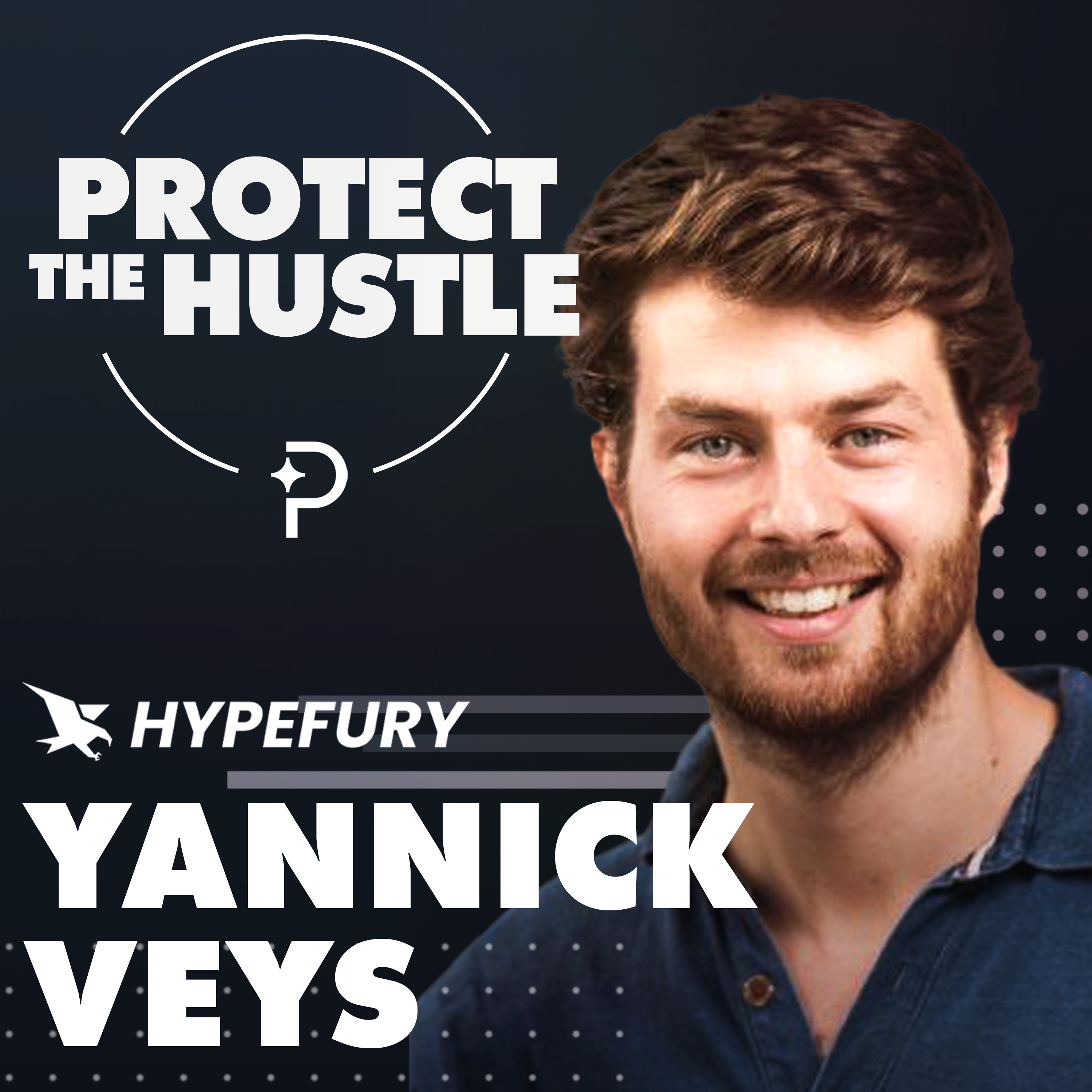
Digital Alchemy: Yannick Veys on Transforming Followers into Fortune
In the world of art, a master painter captivates audiences not only with the visual beauty of his creations but also with the emotions they evoke, turning admirers into passionate investors in his masterpieces. Similarly, in the B2B SaaS landscape, the true art lies in crafting products and services that not only draw in a dedicated community but also compel them to become advocates, monetizing the profound relationships built.
Enter Yannick Veys, the CMO and Co-founder of Hypefury (a Paddle customer), whose expertise in cultivating and monetizing a social media audience is unparalleled. With Hypefury's noteworthy acquisitions, including the Elon Musk-acknowledged acquisition of Black Magic, Yannick showcases how to turn digital admiration into tangible success.
High-Level Overview
- Acquisitions Enhancing Audience Tools: Yannick Veys discusses how they strategically acquired businesses that added complementary features, expanding their suite of tools for audience growth and engagement.
- Challenges with Automation & API Changes: The challenges faced due to automation, especially with tools like chatbots and the implications of major API changes by platforms like Twitter, affect how businesses engage with and grow their audience.
- The Balance of AI and Human Touch: The conversation delves into the role and limitations of AI and chatbots in audience engagement. Yannick stresses the importance of a personal voice and human connection in audience building, predicting potential restrictions against over-automation on platforms.
- Effective Monetization Strategies: Yannick shares specific tactics they employ to help their customers monetize their audiences, such as creating urgency with countdowns, leveraging FOMO, and automated promotions that tactfully engage audiences without overwhelming them.
- Advice and Encouragement for Audience Building: The closing remarks provide advice for those starting on their audience building journey. Yannick emphasizes persistence, the importance of authentic engagement, and the idea that while beginnings might be slow, consistency and genuine interactions will lead to growth.
Digital Alchemy
In today's hyper-connected digital age, the potency of building and monetizing a social media audience cannot be overstated. Garnering a devoted audience is the crux of creating both brand loyalty and a sustained revenue stream. In the vast sea of online businesses, an engaged audience not only amplifies a brand's voice but directly translates to its financial prosperity. But how does one craft a magnetic social media presence and, more importantly, monetize this engagement effectively?
- Strategically Curate Content: Just as Yannick Veys emphasizes, the quality and relevance of content cannot be ignored. Ensure your posts resonate with your audience, offering value and establishing your brand as a thought leader.
- Authentic Voice and Engagement: Adopt an authentic voice and engage genuinely. Automated responses might be quick, but they lack the human touch that audience members yearn for. As Yannick noted, people want to interact with humans, not robots.
- Introduce Automation Strategically: While a genuine touch is invaluable, strategic automation, like the 'autopilot' function Yannick mentioned, can increase engagement and followers. Implement automation for actions like promotions without losing your brand's voice.
- Create FOMO (Fear of Missing Out): Limited-time offers, countdowns, and exclusives can drive immediate action from your audience. As Hypefury demonstrates, creating a sense of urgency can significantly boost sales.
- Monetize Through Diverse Channels: From affiliate marketing, sponsored posts, to online courses or webinars—ensure you're not putting all your eggs in one basket. Diversification is key to sustained revenue.
Building and monetizing a social media audience is as much an art as it is a science. It requires a deep understanding of one's audience, the agility to adapt to changing trends, and the creativity to offer value consistently. While the digital landscape might be ever-evolving, the fundamental principle remains: Understand your audience, offer them undeniable value, and the monetization will follow.
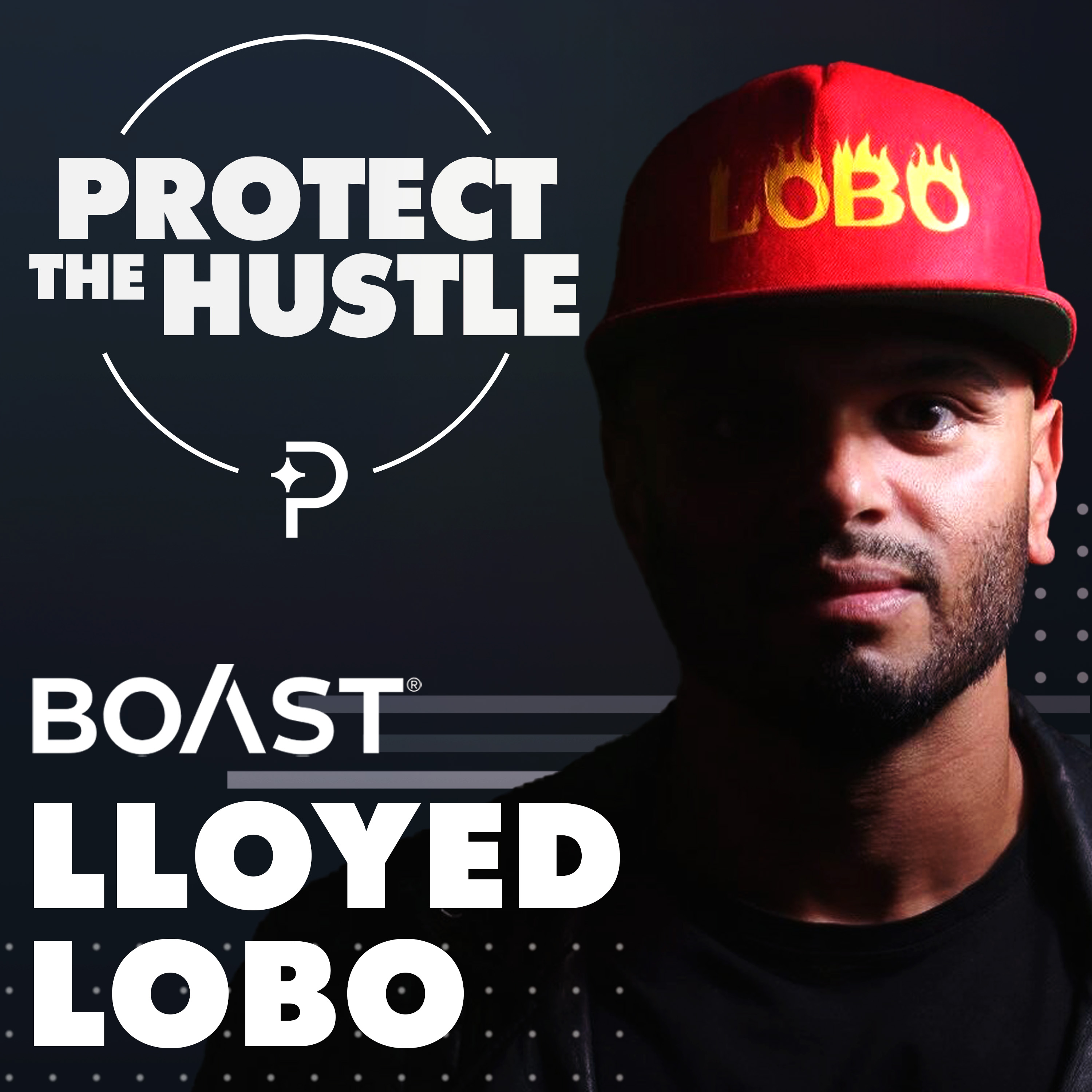
Faith in Community: The Sacred Blueprint for SaaS Success with Lloyed Lobo
Throughout human history, sacred texts and religious congregations have epitomized the enduring power of collective belief. This sense of community, united by a shared doctrine, forms a bond that transcends boundaries, emphasizing not just individual salvation but a collective spirit that uplifts and unifies. Similarly, while a SaaS company is distinct from a religion, it thrives on the relationships it fosters within its user base, emphasizing connections, shared experiences, and the collective value they bring.
Lloyed Lobo of Boast.AI, having delved into the successes of iconic companies like Apple, Atlassian, and more, offers insights into harnessing community-driven growth in his book, "From Grassroots to Greatness." Today's episode takes listeners on a journey with Lloyed, highlighting the significance of community-led growth in B2B SaaS, with his book serving as a beacon for those seeking to deepen their understanding.
Get Lloyed’s new book, 'From Grassroots To Greatness: 13 Rules to Build Iconic Brands with Community Led Growth' (Top New Release on Amazon) at https://FromGrassrootstoGreatness.com
High-Level Overview
- The Power of Collective Belief: Drawing parallels between religious congregations and the potential of building strong communities within the B2B SaaS sector.
- Relationships and Connections in SaaS: Discussing the importance of nurturing relationships, fostering connections, and creating shared experiences among users.
- Case Studies of Iconic Companies: Analyzing the growth and community-building strategies of enduring companies like Apple, Atlassian, CrossFit, Harley-Davidson, HubSpot, and others.
- Lloyed Lobo's Insights and Learnings: Delving into Lloyed's research, his interactions with over a thousand leaders, and the distilled knowledge he provides in his book.
- Community-Led Growth in B2B SaaS: Exploring the transformative impact of community-driven growth strategies on businesses and understanding its long-term benefits.
Community-Led Growth
In an era where customers no longer buy products but experiences, the importance of community-led growth cannot be understated. Building a community fosters genuine connections, creating a platform where customers don't just use your product, but actively champion it. This human-centric approach positions companies at the forefront of consumer minds, forging deeper ties and ensuring longevity in a rapidly evolving market landscape.
- Value-driven Content Creation: Start by generating content that is both educational and beneficial to your target audience. This builds trust and positions your brand as a thought leader in your domain.
- Engaging Forums and Groups: Create spaces, be it online forums or social media groups, where your community can engage, ask questions, and share their experiences. This not only facilitates peer-to-peer learning but also provides invaluable feedback.
- Exclusive Events and Webinars: Host events that offer exclusive insights, previews, or discussions. This not only fosters a sense of belonging but also gives members a reason to stay engaged and involved.
- Collaborative Product Development: Involve community members in beta testing, feedback rounds, and even ideation sessions. This not only improves your product but makes them feel valued and integral to your brand's success.
- Community Ambassadors: Identify and nurture active members to become ambassadors. They can further evangelize your brand, offering a more authentic voice that resonates with potential customers.
- Feedback Mechanisms: Implement clear channels through which community members can provide feedback on products, services, or even community activities. This ensures continuous improvement and adaptability.
While the tactics to cultivate community-led growth can vary, the underlying principle remains consistent: value your community members as co-collaborators, not just consumers. Their collective wisdom, enthusiasm, and advocacy can drive your brand to new heights. As you venture into this realm, remember that genuine engagement and mutual respect are the keystones of any thriving community. Embrace them, and watch your brand flourish in ways you'd never imagined.
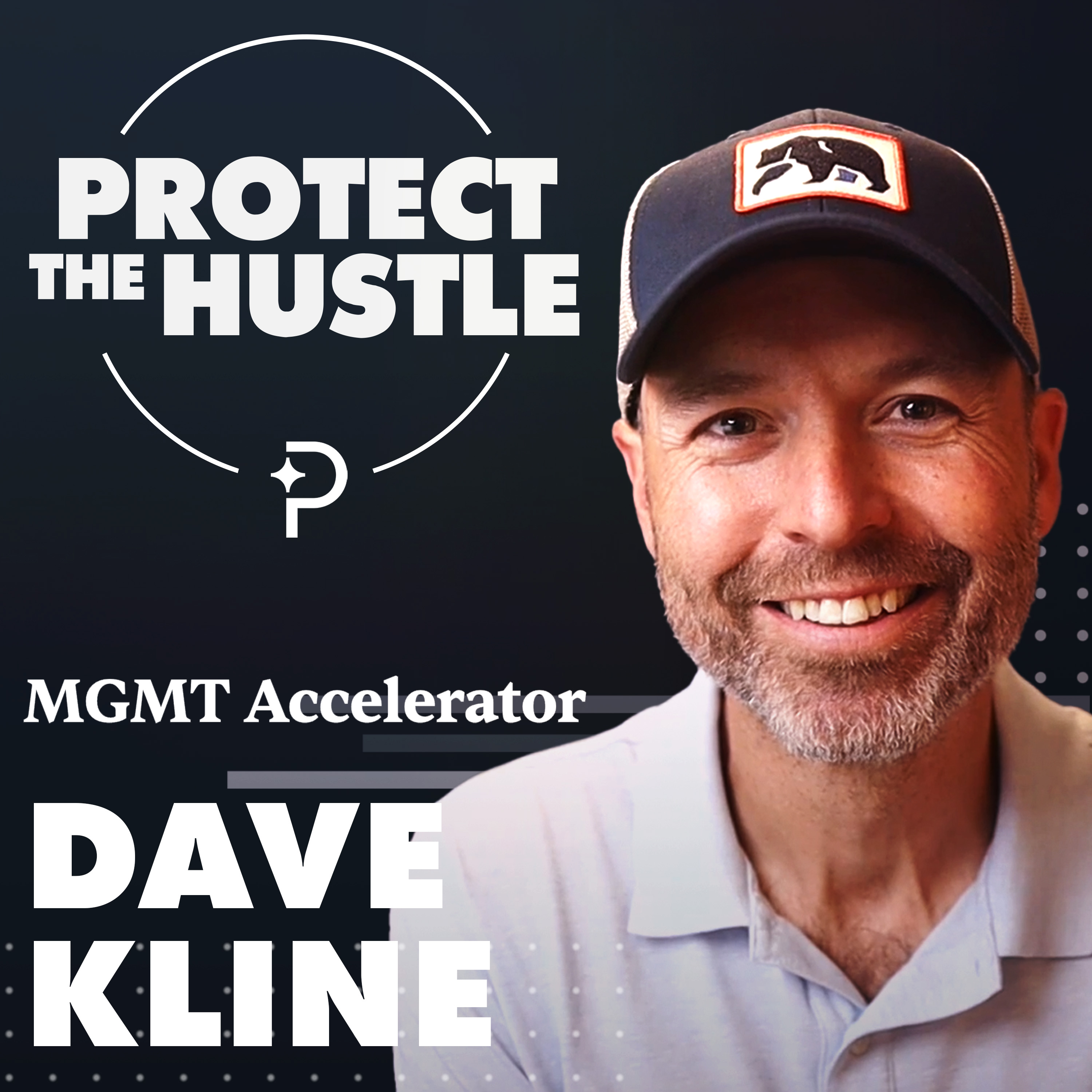
MGMT’s Dave Kline on Unlocking Potential: Dispelling Myths in Management Training
In the world of American football, the coach is the linchpin, melding individuals with varying strengths, fears, and ambitions into a singular, winning force. They transcend mere instruction, turning raw talent into a harmonized strategy, creating trust, camaraderie, and synchronized action on the field.
Similarly, in B2B SaaS, managers are the driving force, identifying and harnessing the unique capabilities of their teams. Dave Kline of MGMT Accelerator embodies this synergy, mastering the art of team cohesion both in sport and business. Today's episode dives deep into the art of effective management, exploring how to optimize individual potential for collective triumph with insights from the master himself, Dave Kline.
High-Level Overview
- Embracing Limitations: The episode delves into the idea of differentiating between genuine limitations and self-limiting beliefs. The story of the artist with handshakes is used as an example to demonstrate how limitations can be embraced and turned into a source of creativity, forcing one to think outside the box and foster innovation.
- The Power of "And": Dave Kline discusses the potential of viewing situations as non-binary. Instead of "either-or" situations, he introduces the concept of "and," suggesting that it's possible to be two things at once, breaking traditional molds or expectations. This topic touches upon not being confined by titles or traditional methods.
- Codifying Culture: The significance of understanding, preserving, and conveying the culture of a growing company is stressed. Dave Kline emphasizes the intrinsic values seen in the first few members of a company and the importance of documenting these values to ensure they aren't diluted as the company grows.
- Language Precision with Values: The episode also touches upon the importance of sharp language when defining company values. Instead of generic terms like "integrity," the idea is to find specific, resonant terms that truly represent the company's values, attracting the right kind of employees and repelling those who might not align with the company's mission.
- Advice for Entrepreneurs: There are multiple moments in the episode where Dave Kline offers advice to those building software businesses from the ground up. Key takeaways include the importance of staying true to one's values, understanding the difference between perceived limitations and actual ones, and ensuring the company's culture and values are clearly communicated and upheld.
Codifying Your Culture
In the dynamic realm of SaaS, a company's culture isn't just an ethereal concept; it's the very backbone of sustainable growth, innovation, and team harmony. A strong, clearly defined culture guides decision-making, promotes consistency, and most importantly, fosters a sense of unity among the workforce. To not merely sustain but truly thrive, businesses must recognize the intrinsic value of their cultural DNA and make intentional efforts to nurture, articulate, and preserve it.
- Identify Core Values: Begin by understanding the foundational values that your company stands for. What principles drive decision-making? What ethical standards are non-negotiable? Establish these clearly.
- Document Company Stories: Historical anecdotes and tales of company milestones often carry the essence of the organizational spirit. Capture these stories; they serve as living testimonials of your culture.
- Consistent Communication: Whether it's through monthly meetings, newsletters, or casual chats, ensure that the cultural ethos is always a part of the conversation.
- Leadership Modeling: Leaders and managers should exemplify the cultural standards, acting as role models for the rest of the team.
- Hire and Train Accordingly: Seek out potential hires who align with your cultural values. During onboarding, place significant emphasis on culture to ensure new members understand and embody it.
- Feedback Loops: Regularly solicit feedback on how well the team feels the company is upholding its cultural tenets. This helps in real-time adjustments and reinforces the importance of culture.
- Celebrate Cultural Wins: Recognize and celebrate when team members or departments particularly embody the company culture, reinforcing its importance.
In conclusion, while technological advancements and business strategies are pivotal, it's the unseen cultural threads that often weave the fabric of long-lasting organizational success. Codifying culture isn't about imposing a set of rules; it's about crystallizing what's already there, ensuring that as the company grows and evolves, its heart and soul remain intact.
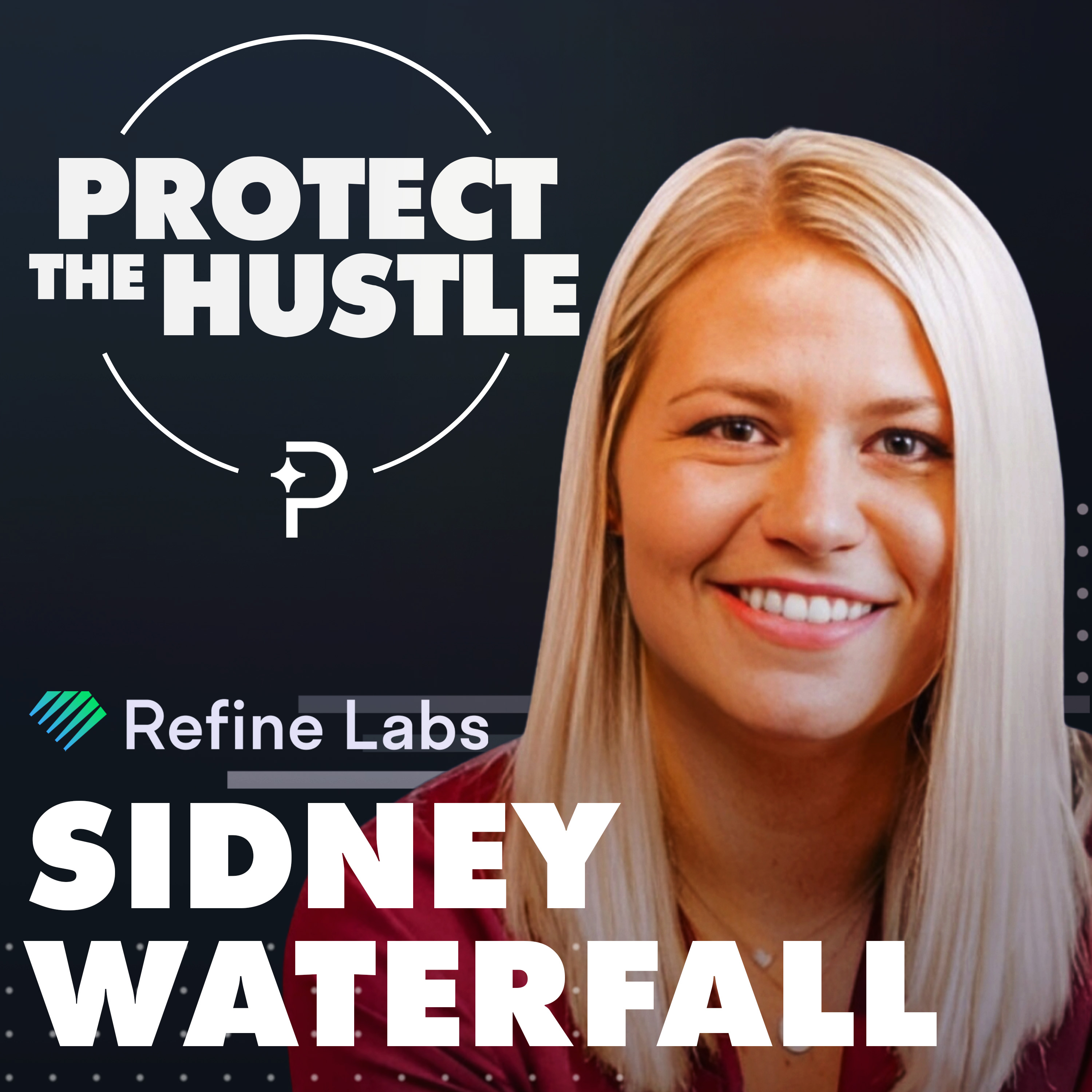
The Demand Waterfall with Refine Labs' Sidney Waterfall
In the verdant heartland, rivers carve their paths, each with a destination in mind, much like the complex currents of market demand. These rivers, shaped by the terrain, can be directed and harnessed using tools like dams and pipes, ensuring every drop finds its purpose. Similarly, in the B2B SaaS world, these currents of demand transform into intricate systems, beautifully epitomized by the "Demand Waterfall".
Sidney Waterfall, the SVP of Marketing at Refine Labs, emerges as the maestro of this intricate landscape. With a profound understanding of these digital waterways, she's the beacon guiding businesses through the ebb and flow of demand. Dive in with us as Sidney reveals the mysteries of the Demand Waterfall, offering insights into turning potential interest into definitive outcomes.
High-Level Overview
- Tracking Macro vs. Micro Data Points: Sidney Waterfall discusses the common mistake businesses make by focusing too much on micro processes and missing out on the more critical macro data points. CEOs and leaders need to understand broader trends and insights to gauge what's working and what's not.
- The Importance of Conversion Sources: Sidney talks about how businesses often get bogged down in tracking conversions at the channel or tactic level, thereby missing the bigger picture. She emphasizes understanding the macro-level perspective like the pipeline source or conversion source.
- Technical vs. Marketing Perspective: Sidney and Andrew talk about whether The Vault’s primary audience is technically inclined founders or those with marketing job titles. Sidney mentions how many founders lead their sales and go-to-market strategies and how their content caters to such audiences.
- The Demand Waterfall: A lighter segment of the discussion revolves around Sidney's surname, Waterfall, and its relevance in the marketing world, especially in relation to the demand waterfall concept. She shares a humorous story about her VP thinking her surname was a pen name.
- Effective Go-to-market Strategy: Sidney provides advice to go-to-market leaders, emphasizing the importance of focus. She suggests that instead of spreading thin and trying multiple channels or tactics, businesses should hone in on one or two and execute them well.
The Demand Waterfall
In the intricate world of B2B SaaS, the Demand Waterfall emerges as a lucid metaphor, helping businesses visualize and optimize their process of turning potential interest into tangible outcomes. Just as rivers traverse through valleys to find their end goal, the Demand Waterfall guides businesses through various stages of capturing, nurturing, and finally converting demand, ensuring that no opportunity is missed.
The Demand Waterfall can be visualized like this:
- The Spring (Source): This is where the water (potential customers) first gushes out. It represents the marketing and promotional efforts to create awareness.
- Buckets (Flow): As the water flows down, it goes through various buckets representing different stages, like capturing interest (demand capture), nurturing the interest, and converting it into actual sales.
- Different Flows: Some buckets might be filled from multiple outlets, representing different departments (like sales, partners, etc.) working together to channel the water effectively.
- Last Bucket (Conversion): This is where water, having passed through all stages, collects in its final form, representing successful sales or partnerships.
In simple terms, The Demand Waterfall is an organized way of visualizing how businesses attract, engage, and ultimately convert potential interest into successful sales, with every department working harmoniously together, just like a series of interconnected buckets handling flowing water.

Zapier’s Kieran Flanagan on Rising Above the AI Commodity Wave
The introduction of fast food was nothing short of revolutionary, offering meals in minutes and setting a groundbreaking standard for efficiency in food service. But as more outlets sprouted, the uniqueness dwindled; every meal tasted eerily similar. In this homogeneity, master chefs found an opening. They combined the rapid technology of fast food with their culinary artistry, creating dishes that were both efficient and distinctively gourmet.
In the B2B SaaS landscape, a similar evolution is underway. As AI technologies become ubiquitous, the challenge shifts from mere adoption to differentiation. Kieran Flanagan, CMO at Zapier, epitomizes this balance. With a deep understanding of how to harness AI while ensuring standout value, Kieran guides businesses to shine amidst a sea of sameness. In today's episode, we'll uncover strategies to stand tall in an AI-saturated market, drawing wisdom from Kieran's mastery in the field.
High-Level Overview
- Market Movement and Challenges in Upgrading Products: Discussing the challenges companies face as they attempt to move upmarket, and the complexities of transitioning from a large user base to addressing the needs of enterprise buyers.
- Customization and Automation in Tech Stacks: Kieran explores the future where software and tech stacks are highly customized to individual needs. Instead of relying on generic, out-of-the-box solutions, users might be able to tailor their tech infrastructure more closely to their requirements, enhancing efficiency and usability.
- Future of Content and Media: How content, increasingly powered by AI, is set to change. The potential shift from brand-driven content to creator-driven content is highlighted, alongside the rise of video and the commoditization of informational content.
- Role of Creators in Modern Marketing: The increasing importance of aligning with creators and leveraging their influence and reach. Brands may need to integrate, partner, or even employ creators to tap into their audience and maintain relevance.
- Adapting to Change in the SaaS Landscape: How SaaS brands can remain innovative and prevent commoditization in a rapidly changing landscape, emphasizing the importance of welcoming change, being adaptable, and embracing challenges.
Standing Out with Your Content in a Commodified AI World
In today's rapidly evolving technological landscape, artificial intelligence (AI) is no longer a novel feature but an expected standard. As AI finds its way into countless applications, its uniqueness wanes, leading to its commodification. This shift raises the baseline of what is considered competent content in the SaaS world. With the ubiquity of AI-powered tools and services, simply being 'good' isn't sufficient. Brands must now aim higher, seeking not just to be part of the conversation, but to lead it. So, how can SaaS companies create content that doesn't just blend into the cacophony but stands out distinctly?
- Unique Narratives: Lean into stories that only your brand can tell. AI may be a common thread, but your journey, challenges, and victories with it are uniquely yours. Narrate them.
- Quality over Quantity: While AI can produce content in bulk, the emphasis should be on producing high-quality, insightful pieces that offer real value to your audience.
- Engage and Listen: Engage with your audience on various platforms. Their feedback and interactions will give you insights on what they truly value.
- Educate with Authenticity: Offer webinars, tutorials, and other educational content that doesn't just promote your product, but genuinely educates the market about the nuances of AI and its applications in your niche.
- AI + Human Touch: Use AI to gather data and insights, but ensure the final touch is human. Personal stories, emotions, and experiences can't be replicated by machines.
In the vast sea of AI-powered content, it's not the loudest voice but the most authentic and insightful one that resonates with the audience. As AI continues to weave itself into the very fabric of SaaS, remember that it's a tool, not the craftsman. Your brand's unique voice, perspective, and the human touch you bring to your content will be your differentiating factor. In a commodified AI world, it's these human nuances that will set you apart, ensuring your content not only reaches but also deeply engages your target audience.
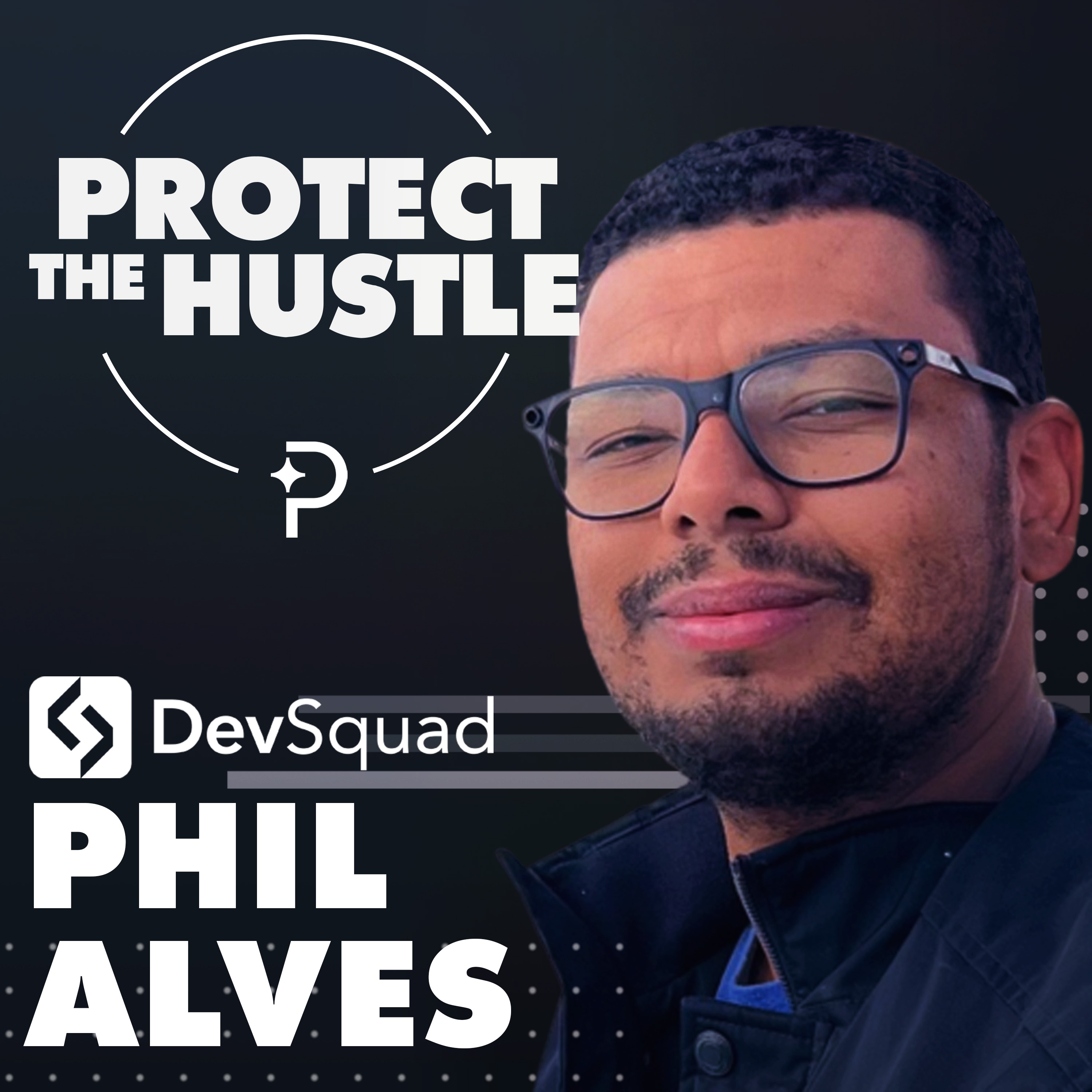
The 6 Instruments to Keep Your Product Alive with DevSquad’s Phil Alves
Taking to the skies, every pilot understands the intricate balance between the intoxicating freedom of soaring and the precise discipline within the cockpit. While they venture into new horizons, their safety and mastery rely on diligently monitoring their flight instruments. This precision and need for measured freedom is mirrored in the B2B SaaS sector. Success isn't about wild gambles but about innovating with a keen eye on vital metrics that determine the trajectory of the enterprise.
Phil Alves, a virtuoso of the SaaS realm and CEO at DevSquad, draws a striking parallel between piloting planes and pioneering in tech. Recognizing the importance of metrics and innovation, Phil emphasizes that the best don't just follow but rely on indispensable instruments. In our upcoming episode, join us as we navigate the SaaS skies with Phil, uncovering the crucial gauges every company must watch to achieve unparalleled success.
High-Level Overview
- Decision Making & Rule Breaking in Business: Phil Alves discusses his approach to not always following best practices in business and market decisions, emphasizing the importance of understanding markets before making a choice.
- Learning from SaaS Founders Through Podcasting: Andrew Davies and Phil Alves discuss the "SaaS Origin Stories" podcast that Phil runs. They delve into the insights and themes that have emerged from interviewing SaaS founders.
- The Evolution of Market Strategies: Phil highlights how market strategies have changed over time, and how strategies that worked a few years ago might not be as effective today.
- Advice for Early-stage SaaS Founders: Both speakers share advice for new SaaS founders, particularly when planning their MVP. Emphasis is placed on the importance of focusing on the initial stages of a business, being adaptive, and learning from the early days of successful companies.
- The 6 Pivotal Instruments for SaaS Success: planning accuracy, failure rate change, cycle time, deployment frequency, code quality review, and rework rate.
The 6 Instruments to Keep Your Product Alive
In the vast skies of SaaS development, while innovation and groundbreaking ideas give your product the initial thrust, it's the vigilant monitoring of key instruments that ensures sustained flight. Think of these instruments as the critical gauges in the cockpit of a plane: without keeping an eagle eye on them, even the most impressive flights could encounter turbulence. The six essential instruments to keep your SaaS product thriving are planning accuracy, failure rate change, cycle time, deployment frequency, code quality review, and rework rate.
Planning Accuracy:
- Begin by setting clear, measurable goals for each sprint or project.
- Regularly review and adjust targets based on the evolving needs and feedback.
- Allow a buffer for unexpected challenges, keeping in mind that a target of 80% is healthy to maintain flexibility and innovation.
Failure Rate Change:
- Continuously monitor product deployments for bugs or issues.
- Implement a robust testing framework to catch potential failures before deployment.
- Foster a culture where quick fixes are prioritized to maintain user trust.
Cycle Time:
- Track the time taken from initiating a project to its deployment.
- Strive for shorter cycle times to increase agility, but ensure quality isn’t compromised.
- Use agile methodologies to enhance efficiency without sacrificing effectiveness.
Deployment Frequency:
- Regular deployments signal a dynamic product environment to users.
- Invest in automation tools that streamline and standardize the deployment process.
- Aim for at least a weekly deployment to remain competitive and responsive to user needs.
Code Quality Review:
- Implement thorough code reviews as a mandatory step before any deployment.
- Foster a culture of constructive feedback, ensuring that code reviews become learning opportunities.
- Keep reviews concise, targeting under 200 lines for optimal comprehension.
Rework Rate:
- Differentiate between productive refactoring and unproductive rework.
- Track instances where previous work has to be redone and investigate root causes.
- Use this metric as a mirror to reflect on the clarity of initial requirements and communication.
In closing, while charting the unknown is the dream of every SaaS pioneer, it's essential to remain tethered to these six instruments. They not only ensure smooth flight but also guide towards uncharted territories safely. Remember, in the realm of SaaS, it's not enough to just take off; sustained flight requires vigilance, responsiveness, and an unwavering commitment to quality and user satisfaction.
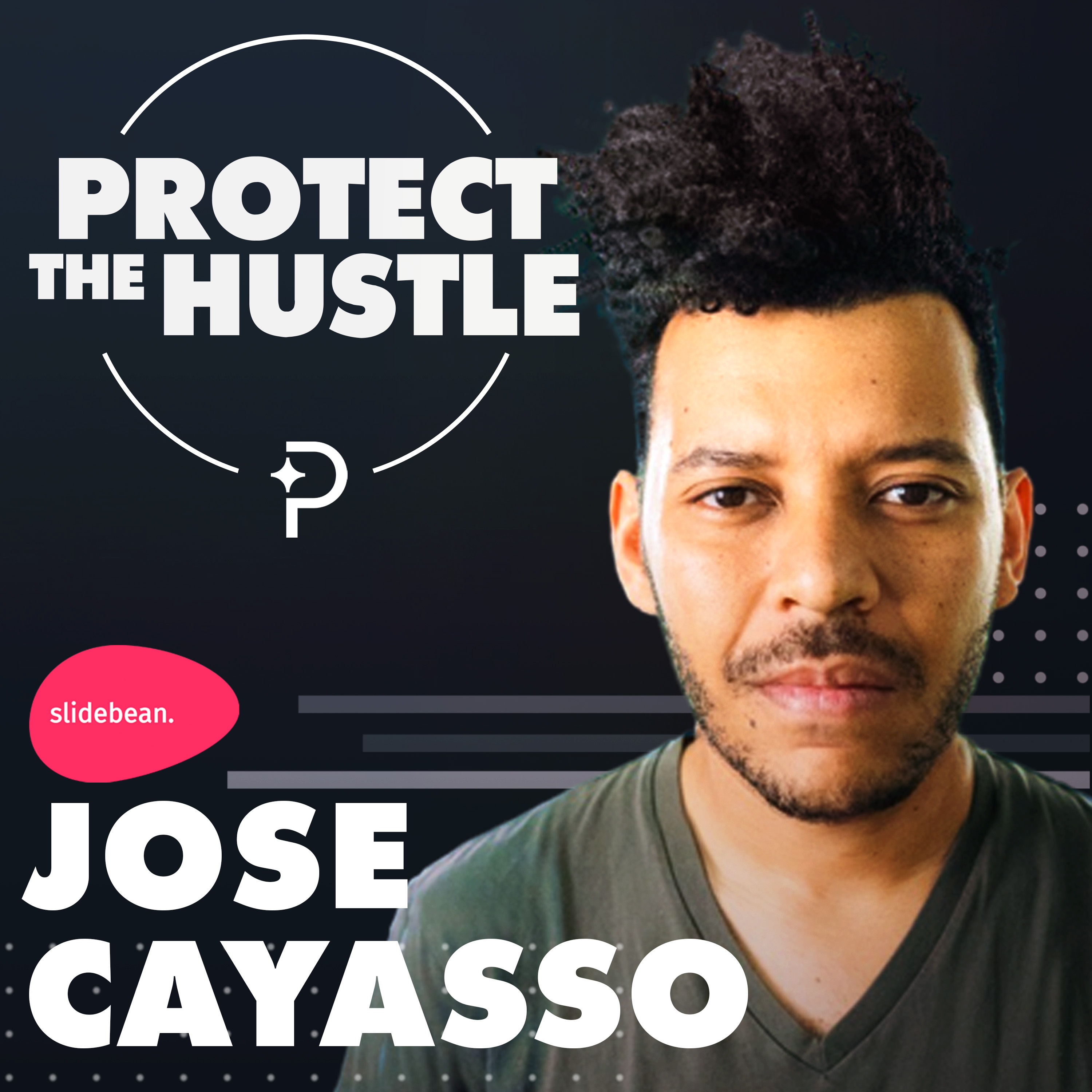
Caya from Slidebean on Mastering the Art of Startup Storytelling
Think of your company's value as a rare treasure, and imagine the best way to get it into the right hands. Content marketing, when executed flawlessly, acts as the perfect delivery service, transporting your company's unique offerings directly to a curious and engaged audience. In B2B SaaS, this precision becomes paramount, with the content acting as customized parcels, addressing the specific needs of each client.
Jose Cayasso, commonly known as Caya, is at the forefront of this strategic delivery system. As the CEO of Slidebean, he has amassed over 350,000 subscribers on their YouTube channel, turning content delivery into an art. Today, we'll dive deep with Caya, understanding how to craft content that doesn't just inform but resonates and engages. Join us as we uncover the secrets behind Slidebean's massive success and learn how to transform your content into the ultimate delivery tool.
High-Level Overview
- Passion for Content Creation Over Monetization: Caya expresses his passion for creating content rather than focusing on monetization, highlighting the value he places on the content itself over the potential revenue it might generate.
- Welcoming and Supporting the Startup Community: Katy Hammond and Caya discuss the need for honesty and validation in the startup community, especially for early-stage founders, and how to create a more welcoming environment.
- Challenges and Lessons from Failed Content Series: They delve into lessons learned from the retired series "Five Minute Tech" and the importance of creating evergreen content that remains valuable to viewers for years.
- Content Strategy Differences with YouTube and TikTok: Caya elaborates on the differences between YouTube and TikTok, highlighting the long-term monetizable value of evergreen content on YouTube and the accessibility of TikTok for companies and creators.
- The Importance of Honest Feedback in Idea Validation: Caya emphasizes the value of honest feedback in the startup community, discussing the common issues founders face in validating their ideas and the importance of critical rather than merely positive responses.
Leveraging Content Marketing
In today's digitally-driven world, content marketing stands as one of the most powerful tools for startups to gain visibility, establish authority, and foster relationships with potential customers. It provides a cost-effective way to communicate a brand's value proposition while resonating with the target audience's needs and preferences. When done right, content marketing not only drives organic traffic and boosts SEO but also cultivates trust, turning passive readers into active customers and brand advocates.
- Define Your Audience: Before creating content, understand who you're speaking to. Create detailed audience personas to cater content to specific needs and pain points.
- Tell a Story: Go beyond traditional promotional tactics. Narrate the journey of your startup, share success stories, or discuss challenges and how you overcame them.
- Quality Over Quantity: It's more beneficial to produce high-quality, in-depth content less frequently than churning out low-value content regularly.
- Leverage Different Mediums: Diversify your content portfolio. Use blogs, videos, podcasts, webinars, and infographics to cater to varied audience preferences.
- SEO is Key: Research relevant keywords and integrate them seamlessly into your content. This ensures that your content gets discovered by the right audience.
- Engage and Interact: Use content to foster a two-way conversation. Encourage comments, feedback, and share user-generated content to build community and trust.
- Analyze and Adjust: Regularly monitor content performance using analytics tools. Understand what's working and what's not, and tweak your strategy accordingly.
In conclusion, leveraging content marketing is not just about populating a blog or sharing videos sporadically. It's a strategic endeavor that requires consistency, understanding of the audience, and continuous learning. As startups are in a unique position to be agile and innovative, they can capitalize on content marketing to carve a niche for themselves in crowded markets. The journey might be demanding, but the results in terms of brand loyalty, awareness, and revenue growth are well worth the effort.
Bio of Protect the Hustle | A SaaS Podcast
"Protect the Hustle" is a SaaS podcast hosted by Paddle, a company focused on helping B2B SaaS businesses accelerate their growth. The podcast aims to provide valuable insights into the strategies and tactics of successful SaaS operators scaling their businesses.
By exploring the truth behind the growth strategies in the SaaS industry, "Protect the Hustle" offers listeners an inside look at the experiences and lessons learned by those who are actively working in the trenches. The podcast is a resource for B2B SaaS operators, providing them with a virtual team of advisors who share their practical knowledge and expertise.
Listeners can expect to gain valuable insights into various aspects of growing a SaaS business, including sales, marketing, product development, and customer success.
Similar Podcasts
The Beautifully Broken Podcast, is a transformative podcast hosted by Freddie Kimmel.
Entrepreneurial Appetite, hosted by Langston Clark.
"Product Marketing Life" is brought to you by the Product Marketing Alliance.
"omega tau" is a podcast hosted by Markus Voelter and Nora Ludewig.
"The Ed Mylett Show" showcases the journeys, knowledge, and thought leadership of the greatest peak performers across various industries.
"The Long Game" is a podcast hosted by Allie Decker, David Ly Khim, and Alex Birkett.
"Women Helping Women Entrepreneurs," a podcast hosted by Christina Rowe.
